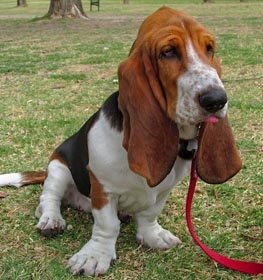Lakeland Terrier Information & Dog Breed Facts
Collection of all the general dog breed info about Lakeland Terrier so you can get to know the breed more.
| Group | Hunting Dogs |
|---|---|
| Popularity Rank | 138 |
| Reviews | 1 |
| User Ratings | |
|
Compare the Lakeland Terrier With Other Dogs
Select at least one dog breed to make the comparsion. | |
 | |
| Origin | |
|
Common Names & Aliases
What other names is a Lakeland Terrier known by? Discover all traditional, regional and informal names used for this breed. | Cumberland TerrierFell TerrierWestmoreland TerrierPatterdale Terrier |
|---|---|
|
Breed Classification
What type of dog breed is a Lakeland Terrier? Learn about its genetic classification and breeding category. | Purebred |
|
Size Classification
What size category is a Lakeland Terrier? Learn how big the Lakeland Terrier breed typically grows. | Small |
|---|---|
|
Weight Statistics
How much does a Lakeland Terrier weigh? Discover typical weight ranges for adult males and females of the Lakeland Terrier breed. | Male: 17 pounds (7.7 kg), Female: 15 pounds (6.8 kg) |
|
Average Weight
What is the average weight of a Lakeland Terrier? | Male: 17 pounds (7.7 kg), Female: 15 pounds (6.8 kg) |
|
Height
How tall is the Lakeland Terrier? Lakeland Terrier height: | 14½ inches (36.8 cm) |
|
Average Height
What is the average height of a Lakeland Terrier? | 14.5 inches (36.8 cm) |
|
Price Range
How much does a Lakeland Terrier puppy cost? Find current market prices and factors affecting Lakeland Terrier costs. | $1200-$1800 If you choose to purchase the Lakeland Terrier, you should know that the mentioned amount of money is an average of the collected data from breeders’ sites and puppy finder places. If you have a Lakeland Terrier for sale, please advertise it on a reliable website to make sure the Lakeland Terrier gets to a happy place. |
|---|---|
|
Availability
How easy is it to get a Lakeland Terrier? How many Lakeland Terrier are there in the world? | Frequent: The Lakeland Terrier is easier than average to get. Maybe there is some risk of overbreeding, as it is a popular breed. Due to its popularity, inbreeding may occur. A new study shows that inbreeding contributes to the incidence of disease and health problems. So be careful and seek the help of an experienced person or a professional, in making your decision. |
|
Intelligence Rating
How intelligent is a Lakeland Terrier? Discover the Lakeland Terrier's intelligence ranking and learning capabilities. | Low to average: This canine intelligence is not the brightest one. Keep in mind that if you want to teach them any tricks, they understand and memorize new commands in 40-80 repetitions. Lakeland Terrier obey the first command 30% of the time or better. So if you want to have a smart dog, you might have to reconsider your choice with this breed.
The Lakeland Terrier ranks below average in the intelligence ranking of dogs. |
|---|---|
|
Training Difficulty
How easy is it to train a Lakeland Terrier? Learn about the Lakeland Terrier's trainability and response to training methods. | Lakeland Terrier dogs are quite easy to train. Sometimes they can be challenging, but if you're consistent in teaching new commands they will obey for sure. |
|
Watchdog Rating
How good is a Lakeland Terrier as a watchdog? Learn about the Lakeland Terrier's alertness and guarding instincts. | Lakeland Terrier dogs are average watchdogs. If they sense something different, they will alert you, but observation isn't considered their main job.
|
|
Territorial Protection
Is a Lakeland Terrier protective of its territory? Learn about the Lakeland Terrier's guarding instincts and behavior. | Lakeland Terrier dogs are extremely protective guard dogs. This breed doesn't hesitate to protect its territory so the Lakeland Terrier can be a good choice if you want an excellent guard dog. Keep calm and the Lakeland Terrier will take care of unwanted people or animals. |
|
Personality Traits
What personality does a Lakeland Terrier have? Learn about characteristic Lakeland Terrier temperament and behavior traits. | IndependentIntelligentConfidentFriendlyTrainableBold |
|---|---|
|
Sensitivity Level
How sensitive are they? Lakeland Terrier sensitivity: | Lakeland Terrier dogs have an average emotional level and are not the most sensitive dog breed. Sometimes it's okay to change the daily routine, have guests and listen to loud music.
Some dogs handle moderate punishment very well, while others crumble apart at a dirty look. This breed is not affected emotionally by moderate punishment. |
|
Affection Level
How affectionate are they? Is a Lakeland Terrier a good family dog? | Average to High: Lakeland Terrier dogs are highly affectionate dogs. They like being involved in the family's life. This breed isn't considered an aloof dog. |
|
Social Needs
How much social interaction does the Cumberland Terrier need? Lakeland Terrier social needs: | Lakeland Terrier dogs are a social breed. They enjoy being around people or other animals. This breed doesn't tolerate being left alone. |
|
Impulse to Wander or Roam
How likely is the Lakeland Terrier to run away? Does this breed explore or wander a lot? Does Lakeland Terrier roam? | Lakeland Terrier dogs have average wanderlust potential. Sometimes they like to explore the world and they might escape once or twice, but usually, they prefer staying safely at home. Safer to teach them how to get back to you on command. |
|
Prey Drive
Do this canine have a strong prey drive? Does Lakeland Terrier have high prey drive? | Lakeland Terrier dogs have a higher impulse to chase and catch something than other dog breeds. Cats or any other small animals might be in danger. It's a natural instinct, doesn't necessarily mean that Lakeland Terrier dogs are aggressive. Better to keep this breed on a leash. |
|
Barking Frequency
Does a Lakeland Terrier bark a lot? Learn about typical Lakeland Terrier vocalization patterns and triggers. | Average: The Lakeland Terrier barks occasionally. They can change their barks depending on their emotional level and what they're trying to say. Different barks could mean the same and the same barks could have different meanings.
Top reasons for barking: protection, alarm, fear, boredom, attention-seeking, greeting, separation anxiety, compulsive barking. |
|---|---|
|
Playful Nature
How playful is a Lakeland Terrier? Understand the typical play drive and energy level of the Lakeland Terrier breed. | The Lakeland Terrier is a playful breed. Excited barking and sometimes nipping will alert you to play. |
|
Apartment Adaptability
Can a Lakeland Terrier live in an apartment? Learn about the Lakeland Terrier's suitability for apartment living. | Apartment-friendly dog the Lakeland Terrier breed. It is best if you have a small garden where it can occasionally go out to do its business, but this is not important at all. You can exercise him enough with a walk or two a day, so he's comfortable in an apartment. |
|
Lifestyle Adaptability
How adaptable is a Lakeland Terrier to lifestyle changes? Learn about the Lakeland Terrier's flexibility to new situations. | Average: Lakeland Terrier dogs adapt to lifestyle changes and different living environments quite okay usually. |
|---|---|
|
Alone Time Tolerance
Can a Lakeland Terrier be left alone? Learn about the Lakeland Terrier's tolerance to solitude. | Lakeland Terrier dogs do best when a family member is at home during the day or if their workplace is dog-friendly so they can take the dog at work. |
|
Bite Risk Assessment
What is a Lakeland Terrier biting potential? Learn about the Lakeland Terrier's bite risk factors. | Low 🔽 The Lakeland Terrier has a low chance of biting somebody. Top reasons for dog bite: protection, pain, excitement, herding instinct, being provoked. (Data based on the available online bite statistics.) |
|---|---|
|
Mouthing Tendency
Is a Lakeland Terrier mouthy? Learn about the Lakeland Terrier's tendency to use mouth during play. | Lakeland Terrier dogs have a low tendency to nip, chew, play-bite, or herd people. It's a common habit during puppyhood, not aggressive behavior. These "bites" don't hurt, but Lakeland Terrier dogs need to be taught a good attitude. |
|
Bite Strength Rating
How strong is a Lakeland Terrier bite? Learn about the Lakeland Terrier's bite force measured in PSI. | Between 100 and 200 PSI 🔽 Lakeland Terrier bite force: Weak. The Lakeland Terrier bite force is considered weak when compared to other dog breeds. The bite force Lakeland Terrier measurements usually fall below 200 PSI, making them one of the breeds with the weakest bite force. The bite force of a Lakeland Terrier may be weak, but it's important to remember that any dog's bite can still be dangerous if not managed properly. Despite the bite force of Lakeland Terrier being lower, it does not make them any less lovable or enjoyable as pets.
Lakeland Terrier bite wounds might not be as severe, but it is still essential to be cautious and prevent any biting incidents. They are usually not aggressive and very friendly towards children and other animals. To ensure a well-behaved dog, it's essential to learn how to train a Lakeland Terrier puppy not to bite from an early age. With proper training and socialization, a Lakeland Terrier can be a wonderful addition to any family, providing love and companionship for years to come. |
|
Average Lifespan
How long does a Lakeland Terrier live? Learn about the typical lifespan of the Lakeland Terrier breed. | 12-16 years The average lifespan of Lakeland Terrier: 14 years |
|---|---|
|
Climate Tolerance
How well does a Lakeland Terrier handle different weather? Learn about the Lakeland Terrier's climate adaptability. | Prefers average to cold weather conditions The Lakeland Terrier can adapt to well to cold weather conditions, some dogs even can be a good mountain dog. |
|
Health Concerns
What health issues are common in a Lakeland Terrier? Discover typical conditions affecting the Lakeland Terrier breed. | Lakeland Terriers tend to have more frequent health issues than other breeds. Regular vet check-ups are needed.
|
|
Vet Care Frequency
How often does a Lakeland Terrier need vet visits? Learn about the Lakeland Terrier's veterinary care requirements. | Frequent The Lakeland Terrier should have a complete physical check-up at least once (but preferably twice) per year. If your dog shows any symptoms, call your veterinarian. |
|
Energy Rating
How energetic is a Lakeland Terrier? Understand daily activity needs of the Lakeland Terrier breed. | Lakeland Terrier dogs are high-energy dogs. An active lifestyle makes them happy. |
|---|---|
|
Activity Requirement / Exercise Need
How much exercise does a Lakeland Terrier need? How much exercise do Lakeland Terrier dogs require per day?
Do Lakeland Terrier dogs need a lot of exercises? | Lakeland Terrier dogs need quite a lot of exercise. Daily walks should be on schedule. If you live an active life, this breed can be a good choice for you. |
|
Sleeping Need
How much sleep does the Lakeland Terrier breed need? | Lakeland Terrier dogs don't need too much sleep. They are energetic and desire to live active life. If you think naps are overrated, this breed can be the best choice for you. |
|
Obesity Tendency
Is a Lakeland Terrier prone to weight gain? Learn about the Lakeland Terrier's obesity risks. | Average: The Lakeland Terrier has an average risk for obesity. Daily walks should be on schedule. To make your dog happy and fit, feed him with quality dry dog food and live an active life together. Try to find the happy medium between exercise and feeding.
If you notice any weight gain, consult your veterinarian and make a diet plan. Reduce unhealthy food and snacks, and measure the Lakeland Terrier weight regularly. |
|---|---|
|
Food Consumption
How much food does a Lakeland Terrier need daily? Learn about the Lakeland Terrier's feeding requirements. | 1/2 to 1 cup dry food a day. |
|
Allergy Friendliness
Is a Lakeland Terrier hypoallergenic? Learn about the Lakeland Terrier's suitability for allergy sufferers. | Yes Lakeland Terrier dogs do well with allergy sufferers by causing fewer allergic reaction. However there are no 100% hypoallergenic dogs in the world, there are a variety of breeds that are considered to reduce or minimize the possibility of an allergic response. Coat type isn't necessarily relevant, because most people are allergic to dander (flakes on the dog's skin) or saliva, not actually to dog hair. |
|---|---|
|
Coat Colors
What colors does a Lakeland Terrier come in? Discover all possible Lakeland Terrier color variations. | BlackTan Red Blue Grizzle LiverWheaten |
|
Grooming Requirements
How much grooming does a Lakeland Terrier need? Learn about Lakeland Terrier coat maintenance requirements. | Professional: This breed needs a lot of work to keep in good condition. The Lakeland Terrier requires grooming on a daily basis.
Cutting the dog's hair by a professional groomer is essential. Everyday brushing of the dog's coat is necessary to reduce shedding. Ears and eyes should be cleaned regularly to avoid infections. Don't skip the seasonal flea treatment too. Dog nail trimming and dog bath should be on a weekly schedule. Taking good care of your Lakeland Terrier is time-consuming and requires excellent grooming skills. If you don't have the time and skill search for the best dog groomer or clipping service in your area and book an appointment. Maybe you're lucky to have a dog boarding service that includes grooming or walk-in dog bath places nearby. |
|
Drooling Tendency
Does a Lakeland Terrier drool a lot? Learn about the Lakeland Terrier's drooling habits. | The Lakeland Terrier is a perfect example of a very low drooling tendency. If you're disgusted by slobber spots on your clothes, the Lakeland Terrier could be a perfect choice for you. Drooling is the unintentional saliva flowing outside of the mouth. It can be completely normal or a sign of a health problem. Certain dog breeds drool minimum compared to others, just like the Lakeland Terrier.
If you notice any change in your dog's drooling habit, you should contact a vet as soon as possible. |
|
Stinkiness Rating
Does a Lakeland Terrier smell bad? Learn about the Lakeland Terrier's natural odor levels. | Medium ⏺ The Lakeland Terrier has an average chance of bad smell. Top reasons for dog stinkiness: infection of bad tooth/ear/skin folds, gas attacks. |
|
Coat Characteristics
What type of coat does a Lakeland Terrier have? Learn about the Lakeland Terrier's fur characteristics. | Wiry |
|
Bathing Needs
How often does a Lakeland Terrier need baths? Learn about the Lakeland Terrier's bathing requirements. | 8-12 weeks Very rarely. Bathing your dog is beneficial to them in more ways than just one. It’s also a good time to look for unusual scratches, bumps, fleas, and other irregularities. When their hair is wet and flat against their body, these details are more visible.
For example, short-haired dog breeds can go a very long time in between baths. These short-haired breeds shed regularly and that shedding works to naturally remove excess dirt and oil. So unless your weenie dog got into the garbage can, you can probably hold off on a bath for a while. |
|
Shedding Level
How much do Lakeland Terrier dogs shed? How to control, reduce and prevent the shedding of the Cumberland Terrier? Do Lakeland Terrier dogs shed a lot? | Lakeland Terrier dogs shed moderately. It's a natural process of the hair growth cycle. Regular brushing reduces the amount of hair that sheds. It mostly depends on their health status and breed type. |
|
Child Compatibility
Is a Lakeland Terrier good with children? Learn about the Lakeland Terrier's behavior around kids of different ages. | Lakeland Terrier dogs are kid-friendly dogs. This breed is a good choice if you have children. |
|---|---|
|
Pet Compatibility
How well does a Lakeland Terrier get along with other pets? Discover the Lakeland Terrier's compatibility with other animals. | Lakeland Terrier dogs do best when they’re the only pet at the family. |
|
Stranger Friendly
Are they aggressive or friendly towards/with strangers? Lakeland Terrier temperament with other people: | Lakeland Terrier dogs are stranger-friendly dogs. |
|
Cat Friendly
How well do Lakeland Terrier dogs get along with cats? Are they good with kittens? What is this fido's temperament with cats? Can they be good with cats? Can the Lakeland Terrier breed live with a cat? | Lakeland Terrier dogs are not cat-friendly dogs. |
|
Dog Friendly
Is Lakeland Terrier good with other dogs? Are they dog-friendly dogs? How well do Lakeland Terrier dogs get along with other dogs? | Lakeland Terrier dogs are not dog-friendly. If you want more dogs in your family or you'd like to join dog meetups, the Lakeland Terrier is not the best choice. |
|
Good For First Time Owners
Is Lakeland Terrier breed good for first-time owners? Do they make a good dog for novice owners? Is Lakeland Terrier breed suitable for first-time owners? | Yes Lakeland Terrier dogs are good for novice owners, due to their easy-going personality. |
|
Office Friendly
Are Lakeland Terrier dogs good office canines? Do Lakeland Terrier dogs make good office-friendly pets? Can they be office dogs? | No Lakeland Terrier is not the best dog breed for office environment. |
|
Senior Citizens Friendly
Are they senior citizens friendly dogs? How well do Lakeland Terrier dogs get along with the elderly people? What is the Cumberland Terrier temperament with senior people? Are Lakeland Terrier dogs good for elderly owners? | Lakeland Terriers are usually recommended for elderly people. |
|
Service Dog Capability
Can a Lakeland Terrier be a service dog? Learn about the Lakeland Terrier's service work potential. | Not really This breed generally not used as a service dog. A service dog is a term used in the USA to refer to any type of assistance dog specifically trained to help people who have disabilities, such as visual impairment, hearing impairments, mental disorders, seizures, mobility impairment, and diabetes. Service dogs are protected under the ADA (Americans with Disabilities Act).
Lakeland Terrier is not the best breed for service purposes. |
|---|---|
|
Therapy Work Suitability
Is a Lakeland Terrier good as a therapy dog? Learn about the Lakeland Terrier's therapy work aptitude. | Not really This breed is generally not used as a therapy dog. A therapy dog is a dog that might be trained to provide affection, comfort, and love to people in hospitals, retirement homes, nursing homes, schools, hospices, disaster areas, and people with anxiety disorders or autism.
Lakeland Terrier is not the best breed for therapeutic purposes. |
|
Scent Detection Ability
Is a Lakeland Terrier good at detection work? Learn about the Lakeland Terrier's scenting abilities. | Not really They are not typically employed for this type of work, but there may be exceptional cases. A detection dog or sniffer dog is a dog that is trained to use its senses (mostly its smell) to detect substances such as explosives, illegal drugs, wildlife scat, currency, blood, and contraband electronics such as illicit mobile phones.
Lakeland Terrier is not the best breed for detection purposes. |
|
Search & Rescue Potential
Can a Lakeland Terrier do search and rescue? Learn about the Lakeland Terrier's SAR capabilities. | Not really This dog breed is not typically used as a search and rescue dog. The use of dogs in search and rescue (SAR) is a valuable component in wilderness tracking, natural disasters, mass casualty events, and locating missing people.
The Lakeland Terrier is not the best breed for SAR purposes. |
|
Maritime Work Ability
Is a Lakeland Terrier good on boats? Learn about the Lakeland Terrier's maritime capabilities. | Not really Lakeland Terrier breed usually doesn't like being on a boat. Boat dogs were typically bred for their strength, stamina, and water resistance, as they were often required to perform tasks such as pulling in fishing nets, and jumping into the water to retrieve ropes or lines, or helping to move cargo. Sailor dog is a type of dog that was bred to accompany sailors on their voyages. They were typically used for three purposes: as a working dog, a watchdog, and as a companion. A boat dog is a term used to describe a type of dog that was traditionally bred and used as a working dog on boats. |
|
Draft Work Capability
Can a Lakeland Terrier pull carts? Learn about the Lakeland Terrier's drafting abilities. | Not really A drafting dog or draft dog is a dog bred and used for cart pulling. Dogs bred for this work have strong builds and qualities that are needed, strength and determination.
Lakeland Terrier is not the best breed for drafting purposes. |
|
Military Service Background
Was a Lakeland Terrier used in military service? Learn about the Lakeland Terrier's military history. | Not really In history, this breed was not really used for combat dog. |
|
Puppy Litter Size
How many puppies does a Lakeland Terrier usually have? Learn about typical litter sizes. | 3-5 puppies |
|---|---|
|
Pregnancy Duration
How long is a Lakeland Terrier pregnant? Learn about the Lakeland Terrier's gestation period. | 60-64 days Reproductive cycle of the female Lakeland Terrier: The first period called Proestrus lasts for about 9 days.
During this time the females start to attract males. You can notice by swelling vulva and bloody discharge. The second part is the Estrus when the female is receptive for the male. It lasts for about 3 to 11 days. The sign of the proestrus part is the soft and enlarged vulva. The discharge decreases and lightens in color. The third part is the Diestrus. Normally, it occurs around day 14. In this period the female’s discharge changes for vivid red and coming to its end. The vulva returns to average, and she will no longer permit mating. The fourth part called the Anestrus. The time frame between heat periods normally lasts about six months. |
|
Breeding Frequency
How often can a Lakeland Terrier have puppies? Learn about safe breeding intervals. | Once a year. More frequent breeding is not healthy. It is very important not to buy a dog from a puppy mill, where the needs of the pups and their mothers are ignored. It's an inhumane high-volume dog breeding facility, where puppies born several times a year. |
|
AKC Classification
What AKC group is a Lakeland Terrier in? Learn about the Lakeland Terrier's AKC classification. | Recognized by the American Kennel Club in 1934 as a Terrier breed. |
|---|---|
|
FCI Classification
What FCI group is a Lakeland Terrier in? Learn about the Lakeland Terrier's international classification. | Recognized by FCI in the Terriers group, in the Large and medium sized Terriers section. |
|
Kennel Club Recognition
Which kennel clubs recognize a Lakeland Terrier? Learn about the Lakeland Terrier's official recognition. | American Canine RegistryAmerican Kennel ClubAmerica's Pet RegistryCanadian Kennel ClubDog Registry of America Inc.Federation Cynologique InternationaleKennel Club of Great BritainNorth American Purebred Registry, Inc.American Canine Association, Inc.Australian National Kennel CouncilContinental Kennel ClubNew Zealand Kennel ClubClub Espanol De Terriers |
Lakeland Terrier Pros and Cons
- Allergy Friendliness: Lakeland Terrier dogs do well with allergy sufferers by causing fewer allergic reaction.
- Apartment Adaptability: Apartment-friendly dog the Lakeland Terrier breed.
- Drooling Tendency: The Lakeland Terrier is a perfect example of a very low drooling tendency.
- Mouthing Tendency: Lakeland Terrier dogs have a low tendency to nip, chew, play-bite, or herd people.
- Child Compatibility: Lakeland Terrier dogs are kid-friendly dogs.
- Senior Citizens Friendly: Lakeland Terriers are usually recommended for elderly people.
- Good For First Time Owners: Lakeland Terrier dogs are good for novice owners, due to their easy-going personality.
- Intelligence Rating: Low to average: This canine intelligence is not the brightest one.
- Health Concerns: Lakeland Terriers tend to have more frequent health issues than other breeds.
- Grooming Requirements: Professional: This breed needs a lot of work to keep in good condition.
- Alone Time Tolerance: Lakeland Terrier dogs do best when a family member is at home during the day or if their workplace is dog-friendly so they can take the dog at work.
- Cat Friendly: Lakeland Terrier dogs are not cat-friendly dogs.
- Dog Friendly: Lakeland Terrier dogs are not dog-friendly.
- Office Friendly: Lakeland Terrier is not the best dog breed for office environment.
Latest Lakeland Terrier Compares
Lakeland Terrier Names
How old is my Lakeland Terrier in human years?
You May Also Like
Rate The Lakeland Terrier Breed
Lakeland Terrier Comments, Reviews and Questions
- Jaime
Feb 20, 2023, 12:23:43 AM:
The Lakeland Terrier is a lighter example of the wire Fox Terrier and the Welsh Terrier , very similar yet a little better if looking for a terrier that barks less often. Beautiful breed !




